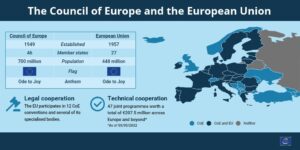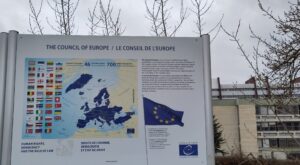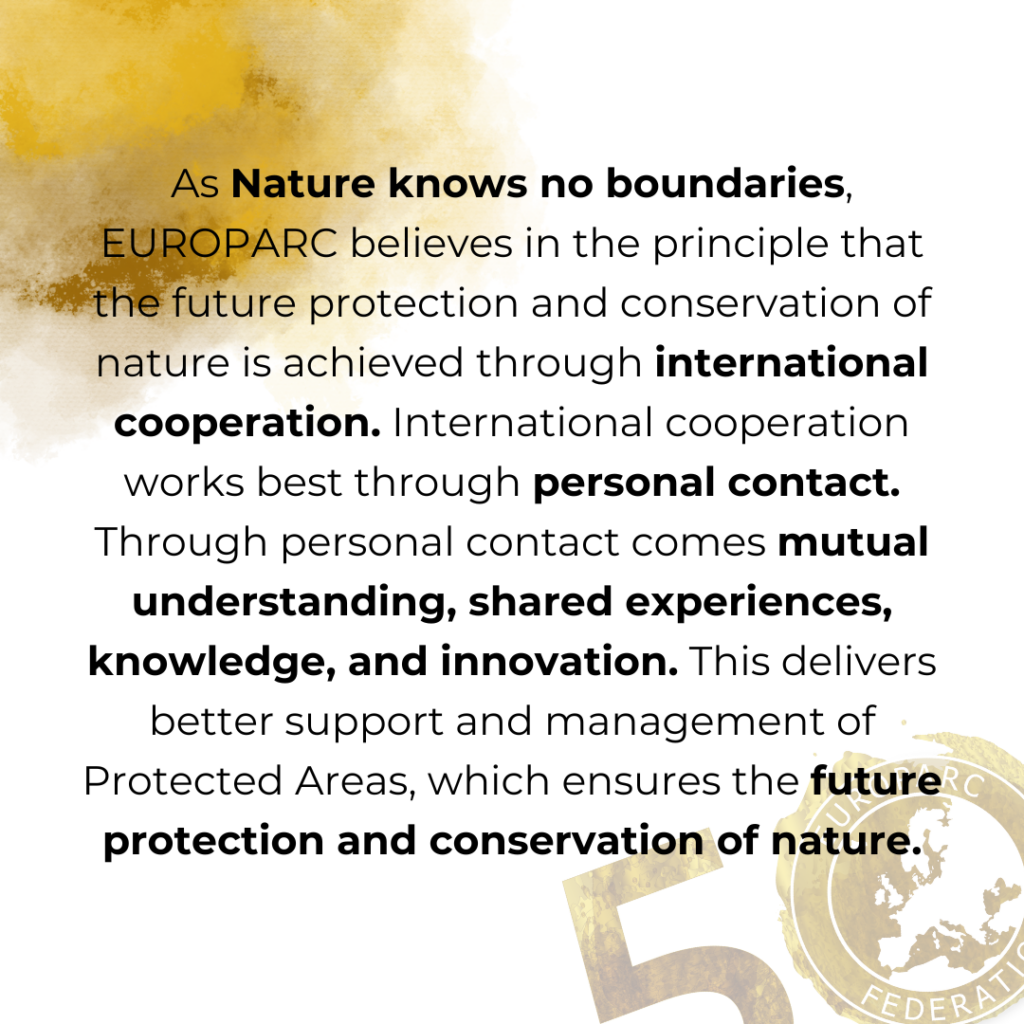Hydrology and Grazing practices in 3 different Protected Areas
Espen during his study visit.
Espen Quinto-Ashman is one of the Alfred Toepfer Natural Heritage Scholarship winners of 2022. For his field trips, he visited three Protected Areas in Eastern Europe to learn more about their management practises, focussed specifically on hydrology and grazing management. This article, written by Espen, details his trips. You can also find a summarising video as well as his full report.
Article written by Espen Quinto-Ashman.
Aspirations of the study visit
Wildlife populations have declined globally an average of 69% between 1970 and 2018. A vast amount of irreparable damage has already been done, and it is likely to get significantly worse at an accelerating pace, even with immediate action. A radical transition away from a growth/consumption based societal system is urgently needed.
If managed correctly, Protected Areas are a vital resource in this struggle, preserving areas of particularly high importance to nature. Nature conservation in non-protected areas should equally not be overlooked, as protected areas cover far too small an area to maintain resilient populations alone.
My aspiration for this study was to learn from the management practices in different Protected Areas and consider how they could be utilized to maximize their effectiveness in protecting nature.
Watch a summary of his visits:
The Protected Areas visited
I selected my three protected areas to represent broadly different habitat types (even if the habitat varies within the area):
Extensive freshwater marshes (Biebrza National Park, Poland), ancient, unmanaged forest (Białowieża National Park, Poland) and meadows (Maramureș Natural Park, Romania). These are all habitats which have been significantly impacted by changes in land use over the past centuries, and their extent in Europe is now probably lower than at any other point in history. This means that Protected Areas are of vital importance to these habitats and the life they support. The management practices required to protect and maintain these different habitat types vary drastically, and this is often reflected in the management practices adopted within Protected Areas.
My study trips allowed me to get a ‘behind the scenes’ view on areas that I have long dreamt of visiting due to their high biodiversity and gave me an insight into the management realities in these areas. The trips were absolutely not all-encompassing, these are large areas with complex conservation issues and the specifics of their management require expert knowledge of the local conditions and history. However, there are several issues which are almost universal in the conservation of terrestrial (and sometimes aquatic) ecosystems.
Key issues
These issues require tailor made conservation strategies, sometimes active and sometimes passive, which are flexible to changing climatic conditions. It is also essential that conservation measures are not restricted to protected areas but also extended to the wider environment. These key issues can be summarised as follows:
- Hydrological systems in a poor state (due to, among other factors: land drainage, changing climatic conditions, pollution and changes to vegetation cover) are a factor in the declines of many species and the degradation of ecosystems as a whole, as well as that of agricultural land. Some of the challenges in the restoration of these systems are practical or financial (especially when it comes to large-scale projects), however the largest challenges are usually posed by opposition by stakeholders and bureaucratic hoops. These activities are essential and should be prioritised.
- Agriculture has and continues to change drastically, from small-scale and extensive, to intensive systems. This transition has an impact on biodiversity which cannot cope with the methods used, including the inputs of agrochemicals. These methods are essential for the growth and profitability of modern crop and livestock varieties but work against, rather than with natural systems. This is not sustainable and will lead to biodiversity collapse and large-scale crop failure. Another issue with changing agricultural practices is the abandonment of agricultural land, this leads to the succession and loss of valuable ecosystems. The solution to these issues can be found in traditional agricultural practices, using traditional varieties of crops and livestock suited to their specific environment with produce distributed locally.
- Forest ecosystems suffer from conventional forestry practices, which as well as destroying old growth forest, often do not allow for the natural development of forest ecosystems with long continuity in tree age as well as natural amounts of dead wood. Plantation of new forests after clear-felling leads to tree monocultures with extremely low biodiversity and a higher susceptibility to climatic events and disease outbreaks. Large quantities of timber and forestry ‘waste’ are used in the production of biofuels, this is not a sustainable replacement for fossil-fuels and is a key driver of demand for forestry products in many countries. The solution to these issues is to plan forestry practices around natural ecosystems and to increase the re-use of forestry products.
Natural ecosystems have never been more fragile and fragmented and the necessity for more careful agriculture, forestry and a reduction in development and extractive industries has never been greater. The consequences of continued ‘business as usual’ are dire, not only for nature but for us too.
The Alfred Toepfer Natural Heritage Scholarships are made possible thanks to the generous support of the Alfred Toepfer Stiftung.
Discover EUROPARC’s history through the voices of its members
In 2023, EUROPARC celebrates its 50th anniversary. To commemorate this milestone, a EUROPARC digital, interactive storybook was launched during our annual Conference in The Netherlands.
50 years connecting People & Parks
With great pride, the EUROPARC Federation presents EUROPARC’s history – as told by its members – through a digital, interactive storybook.
The heart beat of EUROPARC is its members, and the Federation its voice. Let’s share the story of EUROPARC through their own words.
To celebrate our golden jubilee, EUROPARC collected many stories from our membership over the past few months. Through interviews, video messages and old publications, we were able to pull together the stories of the people and events that have made our 50th Anniversary possible.
The content of the interactive storybook follows the essence on which EUROPARC was founded:
The storybook includes videos, pictures, spoken words and texts. We invite our members and the wider network to take a dive into the history of the Federation, through the stories of those that have lived it.
The EUROPARC Federation wants to thank everyone that submitted messages, took part in interviews, or shared their pictures of the past five decades. Furthermore, we want to thank our members, for their unwavering support and dedication to our Network, as well as to the conservation of nature in Europe.
We wish happy readings.

The publication of this digital, interactive storybook was made possible, thanks to the generous support of the Alfred Toepfer Stiftung.
The Council of Europe, the “unknown” European institution, crucial for European nature protection
In July 2022, the United Nations recognised that a healthy, and sustainable environment is a human right. The Council of Europe (CoE), the international institution created to promote democracy and protect human rights and the rule of law in Europe, engaged for years to promote European nature and landscape. Its role is now more relevant than ever to guarantee this human right in the continent. Among the 37 States of our EUROPARC members, 36 are members or observers of the Council of Europe. That is why since 2023 the CoE has been a priority of the EUROPARC Brussels’ Office, and why we are publishing a series of articles to present to our members and public the Council of Europe’s work and the EUROPARC commitment as a member of the CoE’s Conference of International Non-Governmental Organisations.
The Council of Europe, the “unknown” European institution, crucial for European nature protection
The Council of Europe was created in 1949, just after the II World War, and today it brings together 46 member states (Russia lost the status of member in 2022). It is based in Strasbourg (FR), its official languages are French and English, and it is a very important and complex institution.
During its long history, the CoE has launched and implemented several initiatives in the sector of “Culture / Cultural Heritage / Nature” that are very crucial for EUROPARC and its members, among which:
- Bern Convention – Convention on the Conservation of European Wildlife and Natural Habitats
- Landscape Convention
- European Heritage Days
- European Diploma of Protected Areas of the Council of Europe
- Landscape Award of the Council of Europe
- Reykjavik Declaration, annex 5
The CoE is also very committed in the Youth involvement, other important topic for EUROPARC.
But… What is the Council of Europe?
This organisation is distinct from the European Union (EU), even if both share the same European flag, the same European anthem, and no country has ever joined the EU without first belonging to the Council of Europe.
As such, it should not be confused with the European Council and the Council of European Union which are EU institutions…

Source: The Council of Europe and the European Union. Available at: coe.int/en/web/portal/european-union.
Already lost? Do not worry, it is normal!
Forget the EU, and just remain concentrated on the Council of Europe. It is the oldest European institution, created to defend human rights and democracy.
The most famous body of CoE is the European Court of Human Rights (ECtHR) which ensures that States respect the European Convention on Human Rights: citizens, and sometimes even States, can appeal to the Court. In the future, this institution could become relevant in case of violations of the right to a healthy environment.
Nevertheless, there are several other CoE bodies that are less known but vital for the CoE’s work. In particular, four institutions composing the so-called CoE “quadrilogue”
- Committee of Ministers
- Parliamentary Assembly (PACE)
- Congress of Local and Regional Authorities
- Conference of International Non-Governmental Organisations (INGOs)
Each of these bodies has a role in the development of environmental protection in Europe.

The Committee of Ministers is the Council of Europe’s decision-making body. It is composed of the Ministers for Foreign Affairs of Member States. Each Member State guarantees the presidency in turn for 6 months. Occasionally, the Council of Europe organizes Summits of the Heads of State and Government, as done in 2023 in Reykjavik, where they adopted the Reykjavík Declaration – United around our values. The Annex 5 of this declaration is devoted to reinforcing the CoE commitment to environmental protection.
Do you know that some members of your national parliaments are also members of the CoE’s Parliamentary Assembly (PACE)? This is indeed the way to guarantee the voice of the representatives elected by citizens inside the CoE. PACE acts as a “motor”, driving forward new ideas and holds a constant dialogue with governments, national parliaments, other international organisations and civil society which “set the agenda”. With the #EnvironmentRightNow: a PACE initiative of the Assembly in 2021, the institutions strongly pushed for the adoption of a healthy environment as a human right.
The Congress of Local and Regional Authorities is a political assembly whose members represent over 150,000 local and regional authorities throughout Europe. It is responsible for strengthening local and regional democracy in its 46 member states. As the voice of Europe’s municipalities and regions, it works to foster consultation and political dialogue between national governments and local and regional authorities, through cooperation with the Committee of Ministers. Clearly, for all our work connected with regional and natural Protected Areas, as well as Periurban parks, this institution could become a relevant interlocutor.
Last but not least, the Conference of International Non-Governmental Organisations (INGOs). Independent non-governmental organisations are a vital component of European society, guaranteeing freedom of expression and association, fundamental for a functioning democracy. International NGOs (INGOs) have therefore the opportunity to acquire CoE participatory status and become a member of the Conference. Since 2016, its role has increased through a stronger dialogue and collaboration with the other 3 institutions of the “quadrilogue”. The Conference of INGOs meets in its General Assembly twice a year and works in Committees on priority themes. EUROPARC is an active member of the Conference, is part of several working groups and led for 2 years the – Environment, Climate Change, Heritage & Health Committee (ECCH&H).
In the next articles, we will start to explore the CoE’s work and commitment to the environment, as well as its relevant Conventions to discover their importance for the European Protected Areas and the role that EUROPARC and its members can play in promoting and implementing them.
Stay tuned!
EUROPARC Federation and Rewilding Europe to promote wilder parks
Europe’s extensive network of Protected Areas play a vital role in conserving the continent’s natural beauty, flora and fauna. An exciting new partnership between Rewilding Europe and the EUROPARC Federation will help many to create the enabling conditions for wilder nature, delivering essential benefits for people, biodiversity and climate.
Protection and restoration
Protected areas are the backbone of European nature. With more than 120,000 sites designated across Europe, including the 27,000 sites of the Natura 2000 network, such areas cover nearly 1.2 million square kilometres, equating to an area the size of France and Spain combined.
Many of Europe’s protected areas contain unique and frequently awe-inspiring repositories of biodiversity. Yet, simply protecting the nature they currently contain isn’t enough. It’s not enough to halt and reverse biodiversity decline, and it’s not enough to slow and stop climate change. With the geographical extent of such areas so large, there is now a fantastic opportunity to build on the conservation efforts being carried out within them, enhancing the invaluable nature they already contain through rewilding. By focusing on the restoration of natural processes, and working to support and scale up the comeback of European wildlife species that is already happening in many parts of the continent, we can really amplify the benefits such areas deliver, such as clean air, fresh water, and the locking up of atmospheric carbon.
Towards wilder parks

Frans Schepers
In fantastic news for European nature, and for Europeans, a new partnership agreement entitled “Wilder Parks” has just been signed between Rewilding Europe and the EUROPARC Federation – the largest network of European Protected Areas. It will enable Rewilding Europe and the EUROPARC Federation to work together to support and showcase the work of Protected Areas that are already making great progress in restoring nature, and to inspire others, in the wider landscape, to follow their lead. The initiative will help to make the protected areas of the EUROPARC membership, which account for around 40% of the Natura 2000 network, wilder.
“This new partnership has hugely exciting potential,” says Rewilding Europe Executive Director Frans Schepers, who co-signed the agreement with Michael Hošek, EUROPARC President, at our annual Conference celebrating on October 4. “Many European protected areas are already doing a great job in rewilding, but there is wide-ranging scope for others to follow suit. This is where Rewilding Europe can help.”
“I’m delighted to establish this professional cooperation with Rewilding Europe,” adds Michael Hošek.

Michael Hošek
EUROPARC, thanks to its broad and diverse membership base, has significant experience in Protected Area management. We always aim to support our members, and to use measures that are best for protected areas, in collaboration with communities and stakeholders, to enable natural processes to thrive. The cooperation and exchange of experience with Rewilding Europe will benefit both parties.
Letting nature lead
There are a wide range of rewilding measures that Europe’s Protected Areas can employ to create the right conditions for nature recovery. These include allowing forests to naturally regenerate, removing dams and restoring natural water regimes, more natural wildlife management, enhancing natural grazing, leaving carcasses in nature, improving connectivity, reintroducing keystone species, and many more – all with the aim of restoring natural processes and food webs. In conjunction, these measures help to enhance the health, connectivity, functionality and resilience of natural ecosystems. Working with communities and stakeholders across such areas.
The work carried out under the new agreement will include learning from EUROPARC members that are already carrying out rewilding measures, and enabling them to share their knowledge with others. Additional Protected Areas which are keen to apply rewilding principles will be identified, with Rewilding Europe offering them training, resources, and opportunities for knowledge exchange. Access to Rewilding Europe’s European Wildlife Comeback Fund, for example, could help some to start or scale up the reintroduction of keystone species, where appropriate.
Specific activities will be agreed and laid out in a shared work plan which will be finalised next year. These will include the development of joint fundraising proposals, which will aim to secure additional funding for the Wilder Parks initiative.
Meeting commitments
In December 2022, leaders of European countries agreed to adopt the historic Kunming-Montreal Global Biodiversity Framework, which includes a global target to restore 30% of degraded ecosystems globally by 2030. This commitment will contribute to the EU’s own restoration agenda, and obligations of EU Member States under the new Nature Restoration Law, which was approved by the European Parliament in July and is currently in the final negotiation stage.
It’s clear that Protected Areas play an important role in fulfilling the commitments nations made to nature in 2022
says Rewilding Europe’s Head of Upscaling Amy Duthie. “This new partnership, with Rewilding Europe and EUROPARC working together to enable the development of wilder parks, will help to realise a wilder Europe where each country fulfils its biodiversity and climate commitments, for the benefit of both people and nature.”
